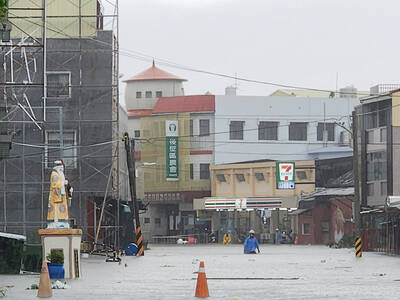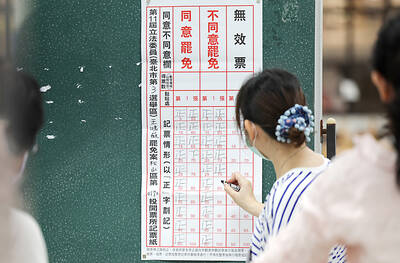After ups and downs and mixed economic messages, Wall Street is retrenching on renewed fears that the US economy is sinking fast and seems likely to enter a recession, analysts say.
The latest US data, including a grim unemployment report on Friday, appear to have settled debate about where the economy is headed, dashing hopes for a quick rebound in the US even as conditions slow in Europe and elsewhere.
“If there was any lingering doubt, yep, it’s a recession, and the fourth quarter is shaping up to be an ugly quarter,” economist Scott Anderson at Wells Fargo Economics said.
“You could almost hear the bulls on Wall Street throwing themselves on their swords over the past five trading days. The payroll report should end the debate that the economy is doing well,” he said.
Dina Cover, economist at TD Bank Financial Group said the “dismal US economic data had a disheartening effect on stock markets.”
“The eight-month string of job losses reaffirms that US consumers have quite a bumpy road ahead, which does not bode well for economic growth in the coming quarters,” she added.
In the holiday-shortened week to Friday, the blue-chip Dow Jones Industrial Average slumped 2.8 percent to end at 11,220.96.
The broad-market Standard & Poor’s 500 index lost 3.16 percent to 1,242.31 and the technology-heavy NASDAQ composite retreated 4.2 percent to 2,255.88.
The US unemployment rate spiked to a five-year high of 6.1 percent last month with 84,000 jobs lost. Auto sales were down sharply from last year’s levels, raising fears about consumer spending and the factory sector.
The reports dampened hopes for a recovery that had been fueled by data showing a robust 3.3 percent growth rate in US gross domestic product in the second quarter — a report that some said was distorted by one-time factors.
The latest data on the labor market “confirms that the improvement in GDP growth to 3.3 percent in the second quarter was just a head-fake,” said Nigel Gault, economist at Global Insight.
For the US Federal Reserve, which has held rates steady at 2 percent while hinting at a rate increase, the payrolls report “confirms that the notion of a rate hike to combat inflation is fanciful — the question now is rather whether the Fed might need to cut again,” Gault said.
The coming week holds some promise, at least in terms of economic data that may be easier to swallow, he said.
Thursday’s report on inflation at the wholesale level is likely to show a decline, reflecting the sharp retreat in energy costs, according to Global Insight economists. This may ease pressure on the Federal Reserve, allowing the central bank to keep interest rates low to stimulate a recovery.
Bond prices rallied as investors looked for a safe haven. The yield on the 10-year Treasury bond fell to 3.660 percent from 3.813 percent a week earlier, while that on the 30-year bond eased to 4.276 percent against 4.412 percent. Bond yields and prices move in opposite directions.

Rainfall is expected to become more widespread and persistent across central and southern Taiwan over the next few days, with the effects of the weather patterns becoming most prominent between last night and tomorrow, the Central Weather Administration (CWA) said yesterday. Independent meteorologist Daniel Wu (吳德榮) said that based on the latest forecast models of the combination of a low-pressure system and southwesterly winds, rainfall and flooding are expected to continue in central and southern Taiwan from today to Sunday. The CWA also warned of flash floods, thunder and lightning, and strong gusts in these areas, as well as landslides and fallen

WAITING GAME: The US has so far only offered a ‘best rate tariff,’ which officials assume is about 15 percent, the same as Japan, a person familiar with the matter said Taiwan and the US have completed “technical consultations” regarding tariffs and a finalized rate is expected to be released soon, Executive Yuan spokeswoman Michelle Lee (李慧芝) told a news conference yesterday, as a 90-day pause on US President Donald Trump’s “reciprocal” tariffs is set to expire today. The two countries have reached a “certain degree of consensus” on issues such as tariffs, nontariff trade barriers, trade facilitation, supply chain resilience and economic security, Lee said. They also discussed opportunities for cooperation, investment and procurement, she said. A joint statement is still being negotiated and would be released once the US government has made

MASSIVE LOSS: If the next recall votes also fail, it would signal that the administration of President William Lai would continue to face strong resistance within the legislature The results of recall votes yesterday dealt a blow to the Democratic Progressive Party’s (DPP) efforts to overturn the opposition-controlled legislature, as all 24 Chinese Nationalist Party (KMT) lawmakers survived the recall bids. Backed by President William Lai’s (賴清德) DPP, civic groups led the recall drive, seeking to remove 31 out of 39 KMT lawmakers from the 113-seat legislature, in which the KMT and the Taiwan People’s Party (TPP) together hold a majority with 62 seats, while the DPP holds 51 seats. The scale of the recall elections was unprecedented, with another seven KMT lawmakers facing similar votes on Aug. 23. For a

SOUTH CHINA SEA? The Philippine president spoke of adding more classrooms and power plants, while skipping tensions with China over disputed areas Philippine President Ferdinand Marcos Jr yesterday blasted “useless and crumbling” flood control projects in a state of the nation address that focused on domestic issues after a months-long feud with his vice president. Addressing a joint session of congress after days of rain that left at least 31 dead, Marcos repeated his recent warning that the nation faced a climate change-driven “new normal,” while pledging to investigate publicly funded projects that had failed. “Let’s not pretend, the people know that these projects can breed corruption. Kickbacks ... for the boys,” he said, citing houses that were “swept away” by the floods. “Someone has